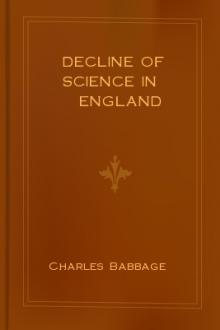Genre Science. Page - 6
No registration or authorisation! And it is all for free!

patterns may be further divided into sub-groups by means of the smaller differences existing between the patterns in the same general group. These divisions are as follows:I. ARCH a. Plain arch. b. Tented arch. II. LOOP a. Radial loop. b. Ulnar loop. III. WHORL a. Plain whorl. b. Central pocket loop. c. Double loop. d. Accidental whorl. Illustrations 1 to 10 are examples of the various types of fingerprint patterns. [Illustration: 1. Plain arch.] [Illustration: 2. Tented arch.] [Illustration:
Disease and Its Causes, William Thomas Councilman [best historical fiction books of all time .txt] 📗

ase of many animals itseems as though the necessity of a fluid environment for living matterdid not apply, for the superficial cells of the skin have no fluidaround them; these cells, however, are dead, and serve merely amechanical or protective purpose. All the living cells of the skin andall the cells beneath this have fluid around them.Living matter occurs always in the form of small masses called"cells," which are the living units. The cells vary in form, structureand size, some

w of progressive development, and as all the forms of life thus tend to progress, in order to account for the existence at the present day of simple productions, he maintains that such forms are now spontaneously generated. (I have taken the date of the first publication of Lamarck from Isidore Geoffroy Saint- Hilaire's ("Hist. Nat. Generale", tom. ii. page 405, 1859) excellent history of opinion on this subject. In this work a full account is given of Buffon's conclusions on the same

he same goal.As to physical things, chemic, mineralogic, astronomic, it is not customary to say that they act to achieve Truth or Entity, but it is understood that all motions are toward Equilibrium: that there is no motion except toward Equilibrium, of course always away from some other approximation to Equilibrium. All biologic phenomena act to adjust: there are no biologic actions other than adjustments. Adjustment is another name for Equilibrium. Equilibrium is the Universal, or that which

is so much harder, to be candid about ourselves. Let us look at ourselves as if we were so many bees and ants, not forgetting, of course, to make use of the inside information that in the case of the insects we so conspicuously lack.This does not mean that human history, once constructed according to truth-regarding principles, should and could not be used for the practical advantage of mankind. The anthropologist, however, is not, as such, concerned with the practical employment to which his

Gratiolet appears to overlook inherited habit, and even to some extent habit in the individual; and therefore he fails, as it seems to me, to give the right explanation, or any explanation at all, of many gestures and expressions. As an illustration of what he calls symbolic movements, I will quote his remarks (p. 37), taken from M. Chevreul, on a man playing at billiards. "Si une bille devie legerement de la direction que le joueur pretend zlui imprimer, ne l'avez-vous pas vu cent fois la

boiling water, and after cooling for a few minutes, it is placed in a vessel containing finely chopped ice (Fig. 10). The mercury column falls rapidly, but finally remains stationary, and at this level another scratch is made on the tube and the point is marked 32°. The space between these two points, which represent the temperatures of boiling water and of melting ice, is divided into 180 equal parts called degrees. The thermometer in use in the United States is marked in this way and is

thebrain. In fact, it does not, for the long-headed are notlong-brained, nor are the short-headed short-brained. Second, thesize and disposal of the sinuses, the state of nutrition inchildhood have far more to do with the "bumps" of the head thanbrain or character. The bump of philoprogenitiveness has in myexperience more often been the result of rickets than a sign ofparental love.[1] It is to be remembered that phrenology had a good standing atone time, though it has since lapsed

gement to the veryvaluable Journals of Poggendorff and Schweigger. Lessexclusively national than their Gallic compeer, they present apicture of the actual progress of physical science throughoutEurope. Indeed, we have been often astonished to see with whatcelerity every thing, even moderately valuable in the scientificpublications of this country, finds its way into their pages.This ought to encourage our men of science. They have a largeraudience, and a wider sympathy than they are perhaps
